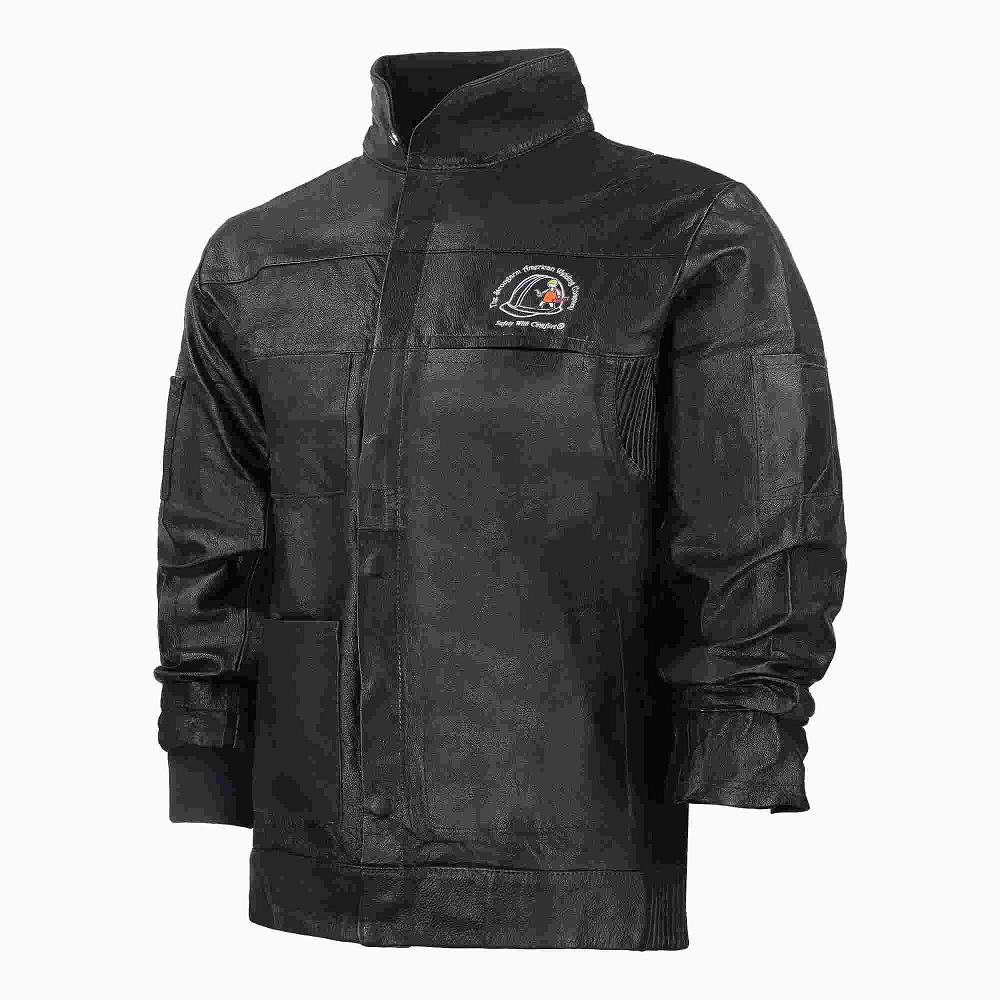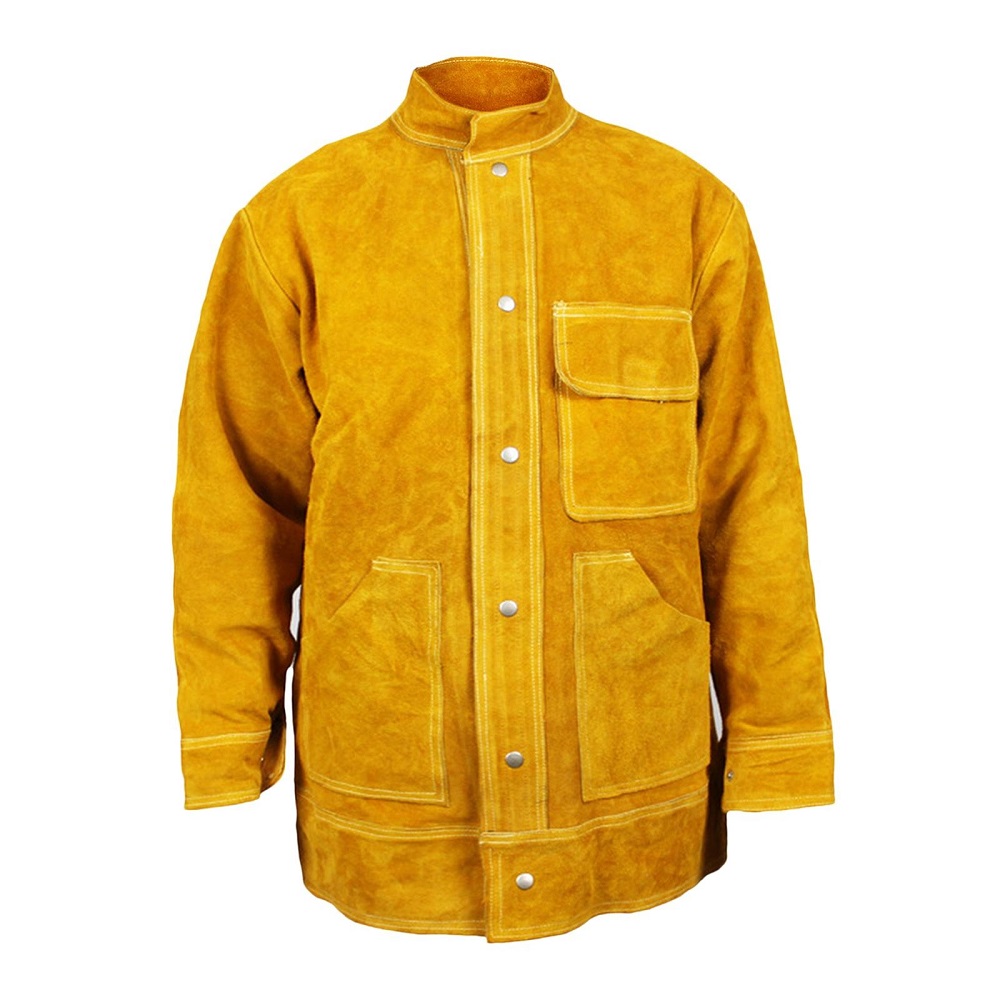
Welding is a skilled trade that requires protective gear to ensure safety in the workplace. One of the most critical pieces of equipment for any welder is the welding coat. The right welding coat not only protects against sparks and heat but also contributes to overall comfort and function during the job. Choosing the right material for your welding coat is essential to ensure that it meets your specific needs. In this article, we will explore the various materials used in welding coats, their benefits, and how to select the right one for your requirements.
Understanding the Function of a Welding Coat
Importance of Protection
A welding coat serves the primary function of protecting the welder from harmful elements present during the process. Welders are exposed to intense heat, flying sparks, and molten metal. A good welding coat is designed to withstand these hazards, providing a barrier against burns and injuries.
The danger of sparks igniting clothing or causing severe burns is significant. Without proper protection, a welder risks serious harm. Thus, investing in a functional welding coat that meets safety standards is crucial for every welder to contribute to a safer working environment.

Comfort During Welding
In addition to protection, a welding coat should also provide comfort during use. Welding can be a demanding job, often requiring long hours of standing and moving. Therefore, the coat should allow for freedom of movement and not add unnecessary weight to your gear.
Comfortable welding coats are designed with various features, such as adjustable cuffs, breathable fabrics, and ergonomic designs. These features enhance the usability of the coat, allowing welders to focus on their work without discomfort.
Lightweight Options for Increased Mobility
For specific types of welding, a lightweight coat may be beneficial. Choosing a material that offers protection while remaining light allows welders to move freely and work efficiently. This balance is essential, especially in complex tasks that require precision and mobility.
Understanding the different types of work you will be performing will help determine whether a lightweight or heavier-duty coat is required. Analyzing the job’s specific demands is crucial for making the right choice.

Common Materials for Welding Coats
1. Leather
Durability and Protection
Leather is a popular choice for welding coats due to its excellent durability and heat resistance. It offers a natural barrier against sparks and molten metal. Leather coats can withstand high temperatures and provide excellent abrasion resistance, making them suitable for heavy-duty welding applications.
Comfort and Fit
Leather coats can also be quite comfortable if fitted correctly. Leather conforms to the body over time, providing personalized comfort as it ages. However, keep in mind that leather may require additional maintenance and cleaning to preserve its appearance and protective qualities.
2. Denim
Strength and Flexibility
Denim is another common material used in welding coats. It is strong and durable, offering good protection against sparks. Denim coats can provide excellent comfort due to their breathability and ability to wick away moisture.
Versatility for Various Tasks
A denim welding coat is versatile and suitable for many welding tasks. It’s relatively lightweight compared to leather and offers sufficient protection for general welding work. Denim is an excellent option for those looking for a balance between comfort and safety without sacrificing mobility.
3. Fire-Resistant Cotton
Enhanced Breathability
Fire-resistant cotton is often used to create welding coats that provide both comfort and protection. This material is designed to withstand heat, ensuring that the wearer is protected from burns. The breathability of cotton helps regulate body temperature, making it a popular choice for welders working in hot environments.
Safety Standards Compliance
When selecting a coat made from fire-resistant cotton, ensure it meets the required safety standards. Look for certifications such as NFPA 701 or ASTM F1506, which guarantee the coat’s ability to provide adequate protection.

Assessing Protection Levels
Understanding Safety Ratings
When choosing a welding coat, it’s vital to assess the protection levels offered. Safety ratings provide guidelines for understanding the level of protection a particular coat can provide against heat, flames, and electrical hazards.
Different materials come with varying safety ratings, and these ratings will often determine the best applications for each coat. For example, a coat rated for arc flash protection will differ from a standard welding coat. Understanding these ratings allows you to choose the right gear for specific welding tasks.
Evaluating Additional Protective Features
In addition to the materials used, various protective features can enhance the overall safety of a welding coat. Consider aspects such as reinforced seams, high collars, and extended cuffs that help block out sparks and debris.
Some models come equipped with protective flaps or pockets for additional gear, enhancing usability without compromising on safety. Taking the time to evaluate these features can help you determine the most appropriate coat for your work environment.
Considering Flame Resistance
Flame resistance is a critical consideration when selecting a welding coat. Look for materials that are inherently flame-resistant or have been treated to resist ignition. This feature is essential in preventing burns and protecting the wearer’s skin.
Regularly check the manufacturer’s specifications for guarantees regarding flame resistance. Making informed decisions based on these specifications will ensure that you’re adequately protected while performing welding tasks.

Finding the Right Fit
Measuring for Proper Size
A well-fitting welding coat is essential for comfort and safety. To find the right fit, begin by measuring your chest, waist, and sleeves. When purchasing, look for sizing charts provided by the manufacturer. These charts can guide you in selecting the appropriate size based on your measurements.
Assessing Mobility and Comfort
When trying on a welding coat, assess how well you can move. Ideally, the coat should allow for a full range of motion without feeling overly tight or restrictive. Move your arms, bend, and stretch to determine if you can maneuver comfortably.
If you plan to wear additional layers, such as thermal inserts or safety gear, consider this when selecting your size. Ensuring a good fit while accommodating extra layers promotes comfort and efficacy during welding tasks.
Trying Different Styles
Different styles of welding coats may fit and perform differently. Trying on various styles helps you determine which works best for your needs. Some coats may feature longer sleeves or different cutting styles that may better accommodate your body shape.
Be sure to explore different brands and designs. Each may provide a different fit and aesthetic, offering options that support both functionality and personal style.
Maintenance Practices
Regular Cleaning and Care
Maintaining your welding coat is crucial for ensuring its longevity. Regularly cleaning the coat will help remove dirt, grime, and other contaminants that can damage the fabric. Follow the care instructions provided by the manufacturer to clean the coat correctly.
For leather coats, use appropriate leather cleaning products designed to preserve the material. For denim or cotton coats, machine washing may be suitable, but be careful to follow the temperature recommendations to avoid damage.
Inspecting for Damage
Routine inspections of your welding coat are necessary for identifying any signs of wear and tear. Check for frayed seams, loose threads, or signs of damage to the fabric. Early detection of issues allows for timely repairs, helping maintain the integrity of the coat.
If you notice significant damage, such as large tears or compromised reinforced areas, consider bringing the coat to a professional for repair. Addressing these concerns promptly will prolong the life of your gear.

Proper Storage Techniques
When not in use, proper storage helps maintain your welding coat’s shape and quality. Store the coat in a clean, dry place away from direct sunlight to prevent fading or damage. Hanging the coat on a padded hanger can help preserve its form.
If the coat is made of leather, consider using a dust cover to protect it while stored. This practice helps keep the material free from dust and grime, ensuring it remains in excellent condition.
Safety Gear Essentials
Additional Protective Equipment
In addition to your welding coat, consider other essential safety gear for welding. This includes gloves, helmets, safety glasses, and appropriate footwear. Each of these components plays a critical role in maintaining your safety while welding.
Look for gloves that provide both dexterity and protection, allowing you to handle tools comfortably while avoiding burns. Helmets with appropriate shades will protect your eyes from intense light, while safety glasses can provide additional protection against flying debris.
Importance of Layering
Depending on the specific welding application, consider layering your protective gear. For example, wearing an appropriate base layer beneath your coat can improve comfort, moisture management, and even insulation if needed. A well-chosen underlayer can enhance your overall comfort while working.
Be mindful of how your layers interact. Ensure they do not hinder movement or add bulk that may impede your work. Layers should work together seamlessly to provide maximum safety, comfort, and performance.
Staying Updated on Safety Standards
Staying informed about the latest safety standards and regulations is essential for any welder. Industry standards, such as those set by the American National Standards Institute (ANSI) and the Occupational Safety and Health Administration (OSHA), ensure that the protective gear is adequately rated for safety.
Regularly checking for updates on safety regulations will help you ensure that your gear remains compliant. This commitment to safety can significantly impact your well-being while on the job.
Riding and Working Responsibly
Safe Welding Practices
Practicing safe welding techniques contributes to both safety and quality. Always adhere to proper welding methods and use your protective clothing and gear as intended. This includes maintaining a clean workspace and using tools correctly.
Stay focused and avoid distractions while welding. Maintaining a calm and composed environment allows for better decision-making and minimizes the risk of accidents. Your dedication to safety will pay off in the long run, protecting not just yourself but those around you.
Seeking Education and Training
Continuous education is vital in the welding field. Participating in training courses or workshops can improve your skills and knowledge of safety protocols. These educational opportunities can keep you updated on advancements in techniques, materials, and best practices.
Engaging with experienced professionals through mentorships or group workshops can be greatly beneficial. They can share invaluable insights, recommendations, and tips that enhance your welding abilities and safety.
Building a Community
Engaging with a welding community can enhance your experience and knowledge. Many towns, cities, and regions have local welding clubs or online communities. These networks offer connections with fellow welders who share similar interests and challenges.
Being part of a community allows for sharing tips, resources, and advice. You might find information on the latest gear, safety updates, or welding techniques that can elevate your skills and knowledge.
Conclusion
Choosing the right welding coat and maintaining it responsibly is crucial for safety and performance in the welding field. Understanding the materials, features, and proper care practices enhances your experience while promoting longevity.
In addition to selecting a quality welding coat, investing in other protective gear, staying updated on safety standards, and participating in a community form the foundation of responsible welding. By making informed choices and prioritizing safety, you contribute to a secure and efficient work environment.
Embrace your journey as a welder and enjoy the satisfaction that comes from mastering your craft. With the right gear and commitment to safety, you can ensure that every welding project is both successful and enjoyable. Protect yourself and maximize your potential with the appropriate tools and knowledge. Happy welding!
